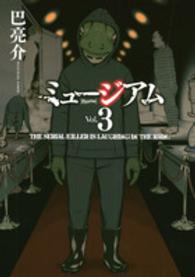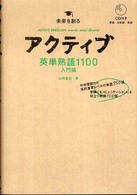- ホーム
- > 洋書
- > 英文書
- > Business / Economics
Full Description
During the Non-Cooperation and Civil Disobedience movement of the 1920s and 1930s, Bombay came to be known as 'the keep of Gandhism'. Its businessmen were seen as the front-line troops and backroom financiers of the nationalists. But it was principally among merchants and traders that this commitment to Gandhian nationalism was deepest; the great industrialists tended to stand aloof - and sometimes even actively opposed the nationalists. Yet, in terms of the boycott of foreign trade, it was they who apparently had most to gain from the economic doctrines of the Indian National Congress. In quiet times, indeed, the industrialists were capable of switching allegiance and supporting the Congress in its attempt to win independence by constitutional means. Dr. Gordon sets out to explain this seeming paradox between the economic interests of the industrialists and their political activity. He examines politics in relation, on the one hand, to the forced modernization of the market sector of the economy, and, on the other, to the profound financial and economic changes following the First World War, Using a wide range of sources, many of them hitherto unexplored, Dr. Gordon argues that the politics of businessmen in a developing colonial economy can only be understood when related to the tensions inherent in the process of economic modernization. This book will interest not only historians of modern India, but also the students of colonial economies throughout the world.
Contents
Abbreviations
Glossary
Acknowledgements
List of Tables
Introduction
1 The Economic Effects of the 1919 Reforms and the First World War
2 Bombay City In 1918
3 The Assault of Modern Capitalism on the Traditional Markets, 1914-1930
4 City Politics and Businessmen
5 Businessmen and Nationalism, 1918-1930
6 Businessmen and Nationalism, 1930-1933
Conclusion
Appendix
Biographical Notes
Notes
Bibliography
Index
Graph: Revenue spent as percentage of revenue raised
Maps: Bombay in 1918
Land Use on Bombay Island, 1918
Density in Bombay Town and Island
Diagram: Bombay Raw Cotton Market








